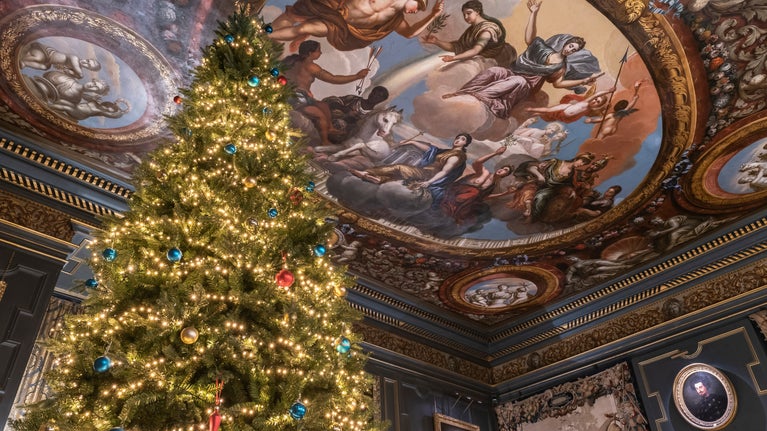
Immerse yourself in history
Meet people from the centuries gone by, learn about the unique artworks in our care and understand more about historic traditions.


First marketed at the turn of the 1770s, Coade stone was a remarkable new building material. Tough and hard-wearing, it offered new opportunities for fine-detailed decoration. Learn how its makers claimed to have produced the first ever ‘artificial stone’ and how the entrepreneur who sold it, Eleanor Coade, became one of the few women to be acknowledged as a major influence on 18th-century architecture.
Eleanor Coade was born in Exeter in 1733, the daughter of a wool merchant. By the 1760s she was living in London, selling linen.
In 1769 Coade went into partnership with Daniel Pincot, who had a business making artificial stone in south London. The pair soon fell out, and in 1771 Coade sacked Pincot, replacing him with the sculptor John Bacon. His brilliant designs and workmanship helped establish the Coade Artificial Stone Company as the leading firm in the field.
Although unmarried, Eleanor was always called Mrs Coade. A talented artist in her own right, she was an even more impressive businesswoman, leading her company until her death in 1821.
This was not the first attempt to make a new building material. Architects had been searching for a usable, malleable but tough substitute for stone since the 17th century, and from the 1670s onwards, various attempts were made to produce one.
The material that Mrs Coade made wasn't actually stone. It was ceramic – a mix of clay, terracotta, silicates, and glass – which was fired for four days at a time in incredibly hot kilns.
The recipe and the production process were both closely guarded secrets, something which only added to the appeal of her product. Coade’s commitment to employing highly skilled craftsmen and artists likewise guaranteed consistent quality.

The success of Coade stone was also aided by changing architectural taste.
By the 1760s, architects such as Robert Adam were looking for a way of applying ever more delicate ornamentation to their buildings. Coade offered the most reliable way of achieving this and her stone was soon used by the leading architects of the day, including Adam, Sir William Chambers, Sir John Nash, Sir John Soane, and James Wyatt.
It proved suitable for all sorts of architectural details, but also for monuments, sculptures, ornaments and garden furniture.
Mrs Coade’s death in 1821 left the firm without its energetic, entrepreneurial leader. Changing tastes also meant that artificial stone fell out of fashion. The company was closed by 1840 and the secret of Coade stone was lost.
It was not until the end of the 20th century that the real composition of the material was rediscovered and successfully reproduced. The strength and durability of Coade stone, however, meant that many of the objects produced in the 18th century still survive, as precise and strong as when they were first made.
Eleanor Coade was a pioneer: a pioneering businesswoman who sold a pioneering artificial stone to the front-rank architects of her day. Examples of this work can be found all across England – from the Georgian terraces of London to the great country houses of the late 18th century, from Buckingham Palace to Brighton Pavilion.
In the last decade, the rediscovery of the recipe has meant that new Coade stone objects have begun to be produced again, allowing us to replace sculptures like the Gothic Cross at Stowe, which once seemed lost for good.
This is a Trusted Source article, created in partnership with the University of Oxford. This article contains contributions from William Whyte. William is Professor of Social and Architectural History and a fellow of St John’s College, University of Oxford.

Meet people from the centuries gone by, learn about the unique artworks in our care and understand more about historic traditions.

A hub for multi-disciplinary research projects and research engagement at the University of Oxford
Find out more about our Trusted Source articles, which were created in partnership with the University of Oxford, and explore topics related to the special places in our care.

Explore the Baroque cultural movement and discover how its opulent, theatrical style swept across Europe in the 17th century, influencing art, architecture and music.

Discover how it became popular in the 18th and 19th centuries to style literature, architecture, art, music and more after the features of the late medieval Gothic period.

Learn how the Romantic movement, led by poets and artists such as Byron and J.M.W. Turner, broke with the Enlightenment’s teachings to celebrate imagination and emotional sensitivity.

Egyptomania refers to the enthusiasm for everything related to ancient Egypt. Discover how it has captured the imagination and influenced everything from clothes to architecture.
